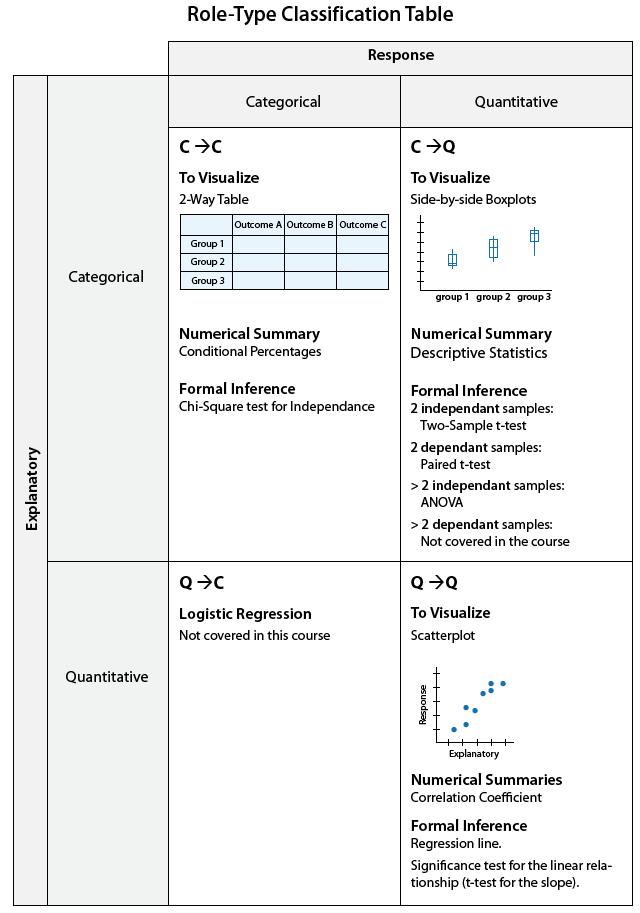Wrap-Up (Inference for Relationships)
( \newcommand{\kernel}{\mathrm{null}\,}\)
Video: Full Course Overview & Summary (68:32)
Learn By Doing: Supplemental Examples and Exercises for Unit 4B
(Non-interactive Version)
We’ve just completed the part of the course about the inferential methods for relationships between variables. The overall goal of inference for relationships is to assess whether the observed data provide evidence of a significant relationship between the two variables (i.e., a true relationship that exists in the population).
Much like the unit about relationships in the Exploratory Data Analysis (EDA) unit, this part of the course was organized according to the role and type classification of the two variables involved.
However, unlike the EDA unit , when it comes to inferential methods, we further distinguished between three sub-cases in case C→Q, so essentially we covered 5 cases in total.
The following very detailed role-type classification table summarizes both EDA and inference for the relationship between variables:

Case C-Q
Here is a summary of the tests for the scenario where k = 2.
Independent Samples (More Emphasis) |
Dependent Samples (Less Emphasis) |
Standard Tests
Non-Parametric Test
|
Standard Test
Non-Parametric Tests
|
Here is a summary of the tests for the scenario where k > 2.
Independent Samples (Only Emphasis) |
Dependent Samples (Not Discussed) |
Standard Tests
Non-Parametric Test
|
Standard Test
|
Case C-C
Independent Samples (Only Emphasis) |
Dependent Samples (Not Discussed) |
Standard Tests
Non-Parametric Test
|
Standard Test
|
Case Q-Q
Independent Samples (Only Emphasis) |
Dependent Samples (Not Discussed) |
Standard Tests
Non-Parametric Test
|
Standard Test
|

